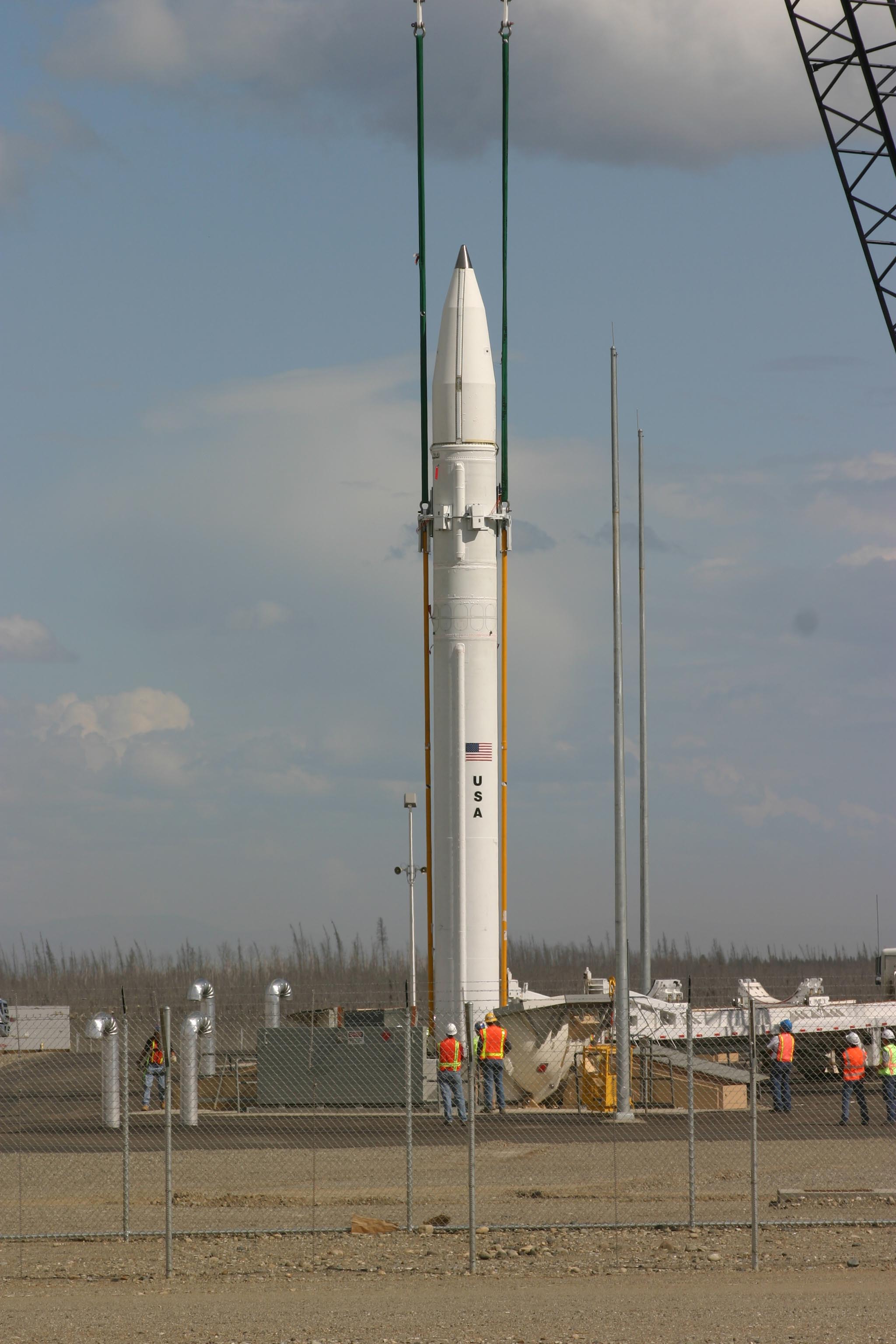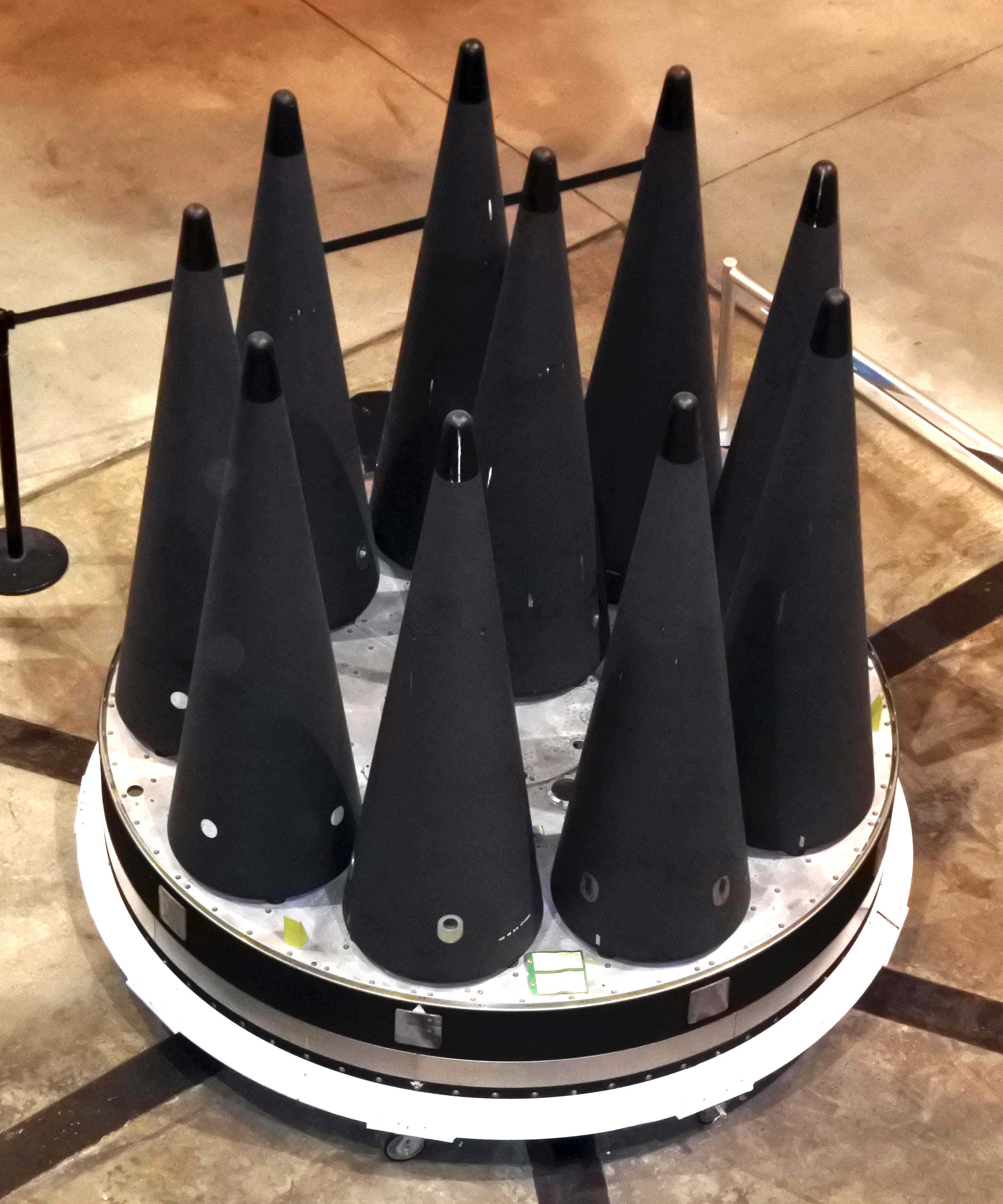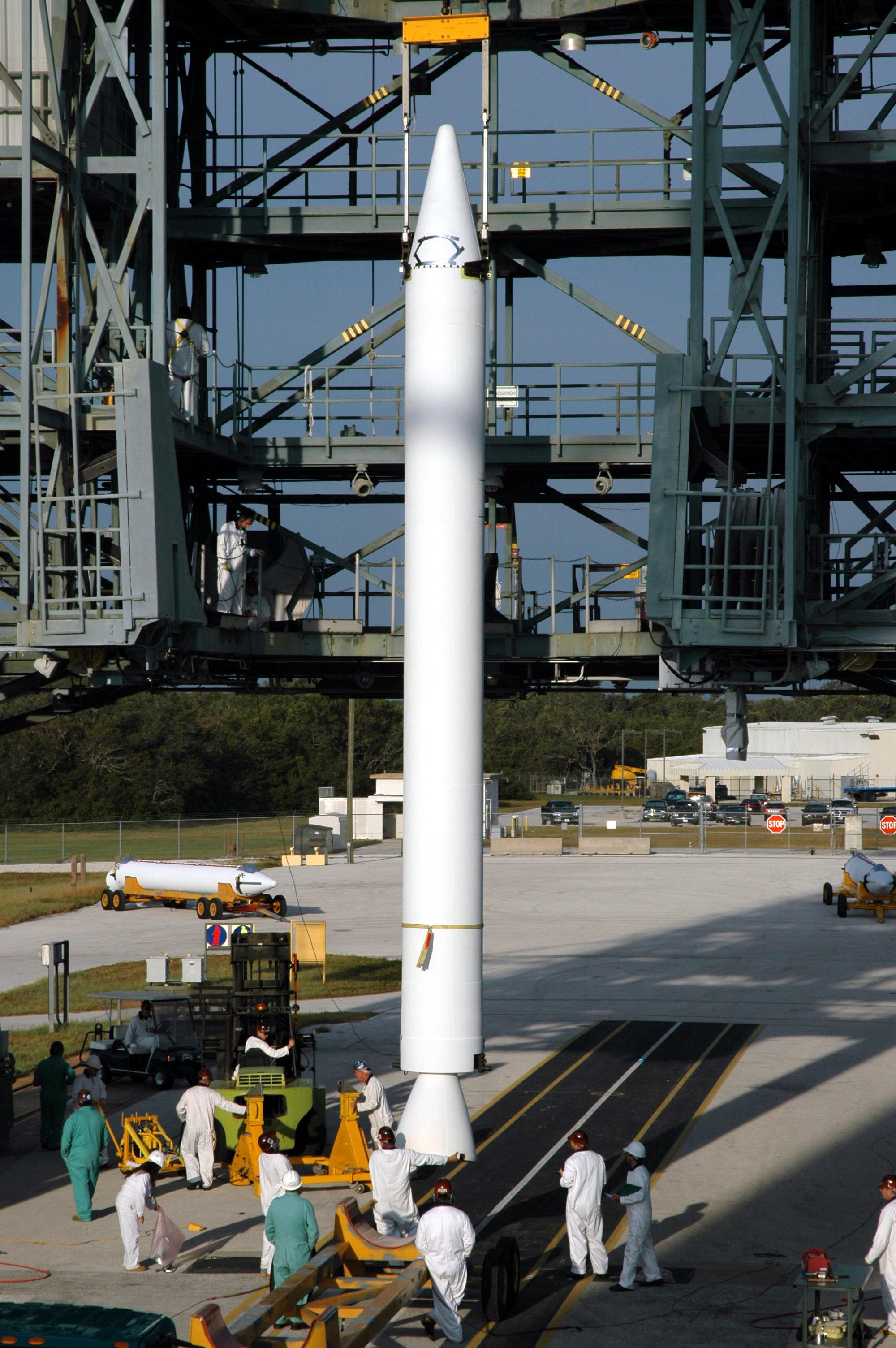|
Anti-ballistic Missile Defense Countermeasure
Anti-ballistic missile defense countermeasures are tactical or strategic actions taken by an attacker to overwhelm, destroy, or evade anti-ballistic missile defenses. Anti-ballistic missile (ABM) defense countermeasures can be categorized in a variety of ways, such as whether something is attacked or just confounded (i.e., whether the defender is attacked, whether the defender's ABM defense is attacked, or whether the defenders ABM system is confounded). They can be categorized by the type of ABM system they are to operate against. Finally, they can be categorized by which part of a ballistic missile's flight they are active (boost, bus, midcourse, or terminal phases). Attacking Countermeasures Countermeasures Attacking the Defender The simplest countermeasure to an ABM defense is to simply increase the size of the attack. This can be done by adding more ICBMs, by increasing the number of warheads delivered by each ICBM using MIRVs, by using SLBMs (which have a much shorter fl ... [...More Info...] [...Related Items...] OR: [Wikipedia] [Google] [Baidu] |
Anti-ballistic Missile
An anti-ballistic missile (ABM) is a surface-to-air missile designed to Missile defense, destroy in-flight ballistic missiles. They achieve this explosively (chemical or nuclear), or via hit-to-kill Kinetic projectile, kinetic vehicles, which may also have self-maneuvering. Tactical systems are widely deployed to counter Short-range ballistic missile, short and Intermediate-range ballistic missile, intermediate-range ballistic missiles that carry conventional weapon, conventional warheads. Strategic systems, deployed by the United States, Russia, and Israel, are capable of intercepting intercontinental ballistic missiles, typically used to carry Strategic nuclear weapon, strategic nuclear warheads. During the Cold War, the 1972 ABM Treaty limited the nuclear arms race; excessive ICBM production would have been favoured to overwhelm ABM systems. Of the modern strategic ABM systems, only Russia's are themselves armed with nuclear warheads. Current counter-ICBM systems There are ... [...More Info...] [...Related Items...] OR: [Wikipedia] [Google] [Baidu] |
Missile Defense
Missile defense is a system, weapon, or technology involved in the detection, tracking, interception, and also the destruction of attacking missiles. Conceived as a defense against nuclear weapon, nuclear-armed intercontinental ballistic missiles (ICBMs), its application has broadened to include shorter-ranged non-nuclear Tactical ballistic missile, tactical and Theater ballistic missile, theater missiles. missile defense systems by country#China, China, France, missile defense systems by country#India, India, Iran, missile defense systems by country#Israel, Israel, Italy, missile defense systems by country#Russia, Russia, missile defense systems by country#Taiwan, Taiwan, the United Kingdom and the missile defense systems by country#United States, United States have all developed such air defense systems. Missile defense categories Missile defense can be divided into categories based on various characteristics: type/range of missile intercepted, the trajectory phase wher ... [...More Info...] [...Related Items...] OR: [Wikipedia] [Google] [Baidu] |
ICBM
An intercontinental ballistic missile (ICBM) is a ballistic missile with a range (aeronautics), range greater than , primarily designed for nuclear weapons delivery (delivering one or more Thermonuclear weapon, thermonuclear warheads). Conventional weapon, Conventional, Chemical weapon, chemical, and Biological agent, biological weapons can also be delivered with varying effectiveness, but have never been deployed on ICBMs. Most modern designs support multiple independently targetable reentry vehicle (MIRVs), allowing a single missile to carry several warheads, each of which can strike a different target. The Nuclear weapons of the United States, United States, Russia and weapons of mass destruction, Russia, China and weapons of mass destruction, China, France and weapons of mass destruction, France, India and weapons of mass destruction, India, the United Kingdom and weapons of mass destruction, United Kingdom, Nuclear weapons and Israel, Israel, and North Korea and weapons of ... [...More Info...] [...Related Items...] OR: [Wikipedia] [Google] [Baidu] |
MIRV
A multiple independently targetable reentry vehicle (MIRV) is an exoatmospheric ballistic missile payload containing several warheads, each capable of being aimed to hit a different target. The concept is almost invariably associated with intercontinental ballistic missiles carrying thermonuclear warheads, even if not strictly being limited to them. An intermediate case is the multiple reentry vehicle (MRV) missile which carries several warheads which are dispersed but not individually aimed. All nuclear-weapon states except Pakistan and North Korea are currently confirmed to have deployed MIRV missile systems. The first true MIRV design was the Minuteman III, first successfully tested in 1968 and introduced into actual use in 1970. The Minuteman III held three smaller W62 warheads, with yields of about each in place of the single W56 used on the Minuteman II. From 1970 to 1975, the United States would remove approximately 550 earlier versions of the Minuteman ... [...More Info...] [...Related Items...] OR: [Wikipedia] [Google] [Baidu] |
SLBM
A submarine-launched ballistic missile (SLBM) is a ballistic missile capable of being launched from submarines. Modern variants usually deliver multiple independently targetable reentry vehicles (MIRVs), each of which carries a nuclear warhead and allows a single launched missile to strike several targets. Submarine-launched ballistic missiles operate in a different way from submarine-launched cruise missiles. Modern submarine-launched ballistic missiles are closely related to intercontinental ballistic missiles (ICBMs), with ranges of over , and in many cases SLBMs and ICBMs may be part of the same family of weapons. History Origins The first practical design of a submarine-based launch platform was developed by the Germans near the end of World War II involving a launch tube which contained a V-2 ballistic missile variant and was towed behind a submarine, known by the code-name ''Prüfstand XII''. The war ended before it could be tested, but the engineers who had worked o ... [...More Info...] [...Related Items...] OR: [Wikipedia] [Google] [Baidu] |
Anti-satellite Weapon
Anti-satellite weapons (ASAT) are space weapons designed to incapacitate or destroy satellites for Military strategy, strategic or Military tactics, tactical purposes. Although no ASAT system has been utilized in warfare, a few countries (China, India, Russia, and the United States) have successfully shot down their own satellites to demonstrate their ASAT capabilities in a show of force. ASATs have also been used to remove decommissioned satellites. ASAT roles include: defensive measures against an adversary's space-based and nuclear weapons, a force multiplier for a nuclear First strike (nuclear strategy), first strike, a countermeasure against an adversary's Anti-ballistic missile defense countermeasure, anti-ballistic missile defense (ABM), an asymmetric warfare, asymmetric counter to a technologically superior adversary, and a countervalue, counter-value weapon. Use of ASATs generates space debris, which can collide with other satellites and generate more space debris. A c ... [...More Info...] [...Related Items...] OR: [Wikipedia] [Google] [Baidu] |
Space Weapon
Space weapons are weapons used in space warfare. They include weapons that can attack space systems in orbit (for example, anti-satellite weapons), attack targets on the earth from space or disable missiles travelling through space. In the course of the militarisation of space, such weapons were developed mainly by the contesting superpowers during the Cold War, and some remain under development today. Space weapons are also a central theme in military science fiction and sci-fi video games. Space-to-space weapons The Soviet Almaz secret military space station program was equipped with a fixed 23mm autocannon to prevent hostile interception or boarding by hostile forces. This was the first and so far the only space-to-space weapon to be fired in orbit. The Soviet uncrewed Polyus weapons platform was designed to be equipped with a megawatt carbon-dioxide laser and a self-defense cannon. Earth-to-space weapons Anti-satellite weapons, which are primarily surface-to-space ... [...More Info...] [...Related Items...] OR: [Wikipedia] [Google] [Baidu] |
Infrared Signature
Infrared signature, as used by defense scientists and the military, is the appearance of objects to infrared sensors. An infrared signature depends on many factors, including the shape and size of the object, temperature, and emissivity, reflection of external sources ( earthshine, sunshine, skyshine) from the object's surface, the background against which it is viewed and the waveband of the detecting sensor. As such there is no all-encompassing definition of infrared signature nor any trivial means of measuring it. For example, the infrared signature of a truck viewed against a field will vary significantly with changing weather, time of day and engine loading. Two fairly successful examples of defining the infrared signature of an object are the apparent temperature difference at the sensor and the contrast radiant intensity (CRI) definitions. Apparent temperature difference The apparent temperature difference method of defining infrared signature gives the physical temperat ... [...More Info...] [...Related Items...] OR: [Wikipedia] [Google] [Baidu] |
Booster (rocketry)
A booster is a rocket (or rocket engine) used either in the first stage of a multistage launch vehicle or in parallel with longer-burning sustainer rockets to augment the space vehicle's takeoff thrust and payload capability. Boosters are traditionally necessary to launch spacecraft into low Earth orbit (absent a single-stage-to-orbit design), and are especially important for a space vehicle to go beyond Earth orbit. The booster is dropped to fall back to Earth once its fuel is expended, a point known as ''booster engine cut-off'' (BECO). Following booster separation, the rest of the launch vehicle continues flight with its core or upper-stage engines. The booster may be recovered, refurbished and reused, as was the case of the steel casings used for the Space Shuttle Solid Rocket Boosters. Drop-away engines The SM-65 Atlas rocket used three engines, one of which was fixed to the fuel tank, and two of which were mounted on a skirt which dropped away at BECO. This was used ... [...More Info...] [...Related Items...] OR: [Wikipedia] [Google] [Baidu] |
Mylar
BoPET (biaxially oriented polyethylene terephthalate) is a polyester film made from stretched polyethylene terephthalate (PET) and is used for its high tensile strength, chemical stability, dimensional stability, transparency reflectivity, and electrical insulation. When metallized, it has gas and moisture barrier properties. The film is "biaxially oriented", which means that the polymer chains are oriented parallel to the plane of the film, and therefore oriented over two axes. A variety of companies manufacture boPET and other polyester films under different brand names. In the UK and US, the best-known trade names are Mylar, Melinex, Lumirror and Hostaphan. It was the first biaxially oriented polymer to be manufactured on a mass commercial scale. History BoPET film was developed in the mid-1950s,Izard, Emmette Farr"Production of polyethylene terephthalate" U.S. patent no. 2,534,028 (filed: 1948 May 13; issued: 1950 December 12). originally by DuPont, Imperial Chemical ... [...More Info...] [...Related Items...] OR: [Wikipedia] [Google] [Baidu] |
Ablation
Ablation ( – removal) is the removal or destruction of something from an object by vaporization, chipping, erosion, erosive processes, or by other means. Examples of ablative materials are described below, including spacecraft material for ascent and atmospheric reentry, ice and snow in glaciology, biological tissues in medicine and passive fire protection materials. Artificial intelligence In artificial intelligence (AI), especially machine learning, Ablation (artificial intelligence), ablation is the removal of a component of an AI system. The term is by analogy with biology: removal of components of an organism. Biology Biological ablation is the removal of a biological structure or functionality. Genetic ablation is another term for gene silencing, in which gene expression is abolished through the alteration or deletion of genetic sequence information. In cell ablation, individual cells in a population or culture are destroyed or removed. Both can be used as experimen ... [...More Info...] [...Related Items...] OR: [Wikipedia] [Google] [Baidu] |
Reflective Coating
Reflection is the change in direction of a wavefront at an interface between two different media so that the wavefront returns into the medium from which it originated. Common examples include the reflection of light, sound and water waves. The ''law of reflection'' says that for specular reflection (for example at a mirror) the angle at which the wave is incident on the surface equals the angle at which it is reflected. In acoustics, reflection causes echoes and is used in sonar. In geology, it is important in the study of seismic waves. Reflection is observed with surface waves in bodies of water. Reflection is observed with many types of electromagnetic wave, besides visible light. Reflection of VHF and higher frequencies is important for radio transmission and for radar. Even hard X-rays and gamma rays can be reflected at shallow angles with special "grazing" mirrors. Reflection of light Reflection of light is either ''specular'' (mirror-like) or ''diffuse'' (retaining the ... [...More Info...] [...Related Items...] OR: [Wikipedia] [Google] [Baidu] |







